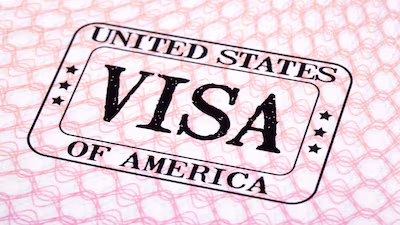.png)
.png)
Explore O-1 visa alternatives to academic publications including invited whitepapers, technical standards, and RFCs for tech professionals without traditional research.

Not everyone publishes in journals. Industry professionals often lack time for academic peer review. Startup founders focus on products, not papers. But USCIS authorship criteria don't require academic publications specifically. The regulation says "scholarly articles in the field, in professional journals, or other major media."
That "or other major media" phrase opens doors. Technical whitepapers count. RFC documents qualify. Standards contributions work. Even substantial technical blog posts can meet requirements with proper evidence. The key? Prove professional audience, technical depth, and measurable impact.
Your O-1 alternatives without publications exist. You just need to document them correctly.
Concerned about lacking traditional publications? Beyond Border identifies alternative authorship evidence in your background.
Whitepapers O-1 visa evidence works when structured properly. Not all whitepapers qualify. Marketing materials disguised as whitepapers don't prove expertise. Technical documents solving real problems do. Quality indicators matter. Does your whitepaper present original research? Novel implementations? Detailed technical analysis? These elements prove scholarly depth.
Distribution reach demonstrates impact. A whitepaper downloaded 50,000 times shows substantial professional interest. Citations by others validate value. If subsequent papers, blog posts, or documentation cite your whitepaper, this proves influence.
Implementation evidence strengthens cases. Companies building products based on your whitepaper demonstrate practical impact. Expert letters contextualizing whitepaper significance help enormously. Industry specialists can explain why your document represents important contribution.
Company-published whitepapers can work. Major tech companies like Google, Microsoft, or AWS publish influential technical whitepapers rivaling academic papers in impact.
RFC documents visa application materials provide strong evidence. RFCs (Request for Comments) define internet standards. If you've authored or substantially contributed to RFCs, you've shaped how the internet works.
Authorship of any RFC demonstrates expertise. List yourself on document establishing technical standards proves recognized ability.
Implementation by major organizations validates your RFC. If Google, Amazon, or Microsoft implement your standard, document this adoption.
Citation in other RFCs or technical documents shows influence. Track how many subsequent standards reference your work.
Standards track versus informational RFCs differ. Standards track documents undergo more rigorous review. Clarify your RFC's status.
Working group participation beyond authorship matters. Serving on IETF working groups, reviewing others' proposals, or chairing sessions demonstrates broader contribution.
Industry adoption metrics strengthen cases. How many products or services implement your RFC? This usage proves real-world impact.
Let Beyond Border help present your RFC contributions as extraordinary ability evidence.
Technical standards O-1 proof comes from various organizations.
IEEE publishes standards widely used in electronics, computing, and telecommunications. Contributing to IEEE standards demonstrates expertise. Document your specific role. Were you primary author? Contributing editor? Reviewer? Each role carries different weight.
W3C standards govern web technologies. If you contributed to HTML, CSS, or JavaScript specifications, this proves influence on fundamental technologies. ISO standards affect numerous industries. Participation in ISO working groups on relevant topics demonstrates international recognition.
Industry consortia create important standards. Contributions to specifications from groups like the Linux Foundation or Cloud Native Computing Foundation count.
Adoption metrics matter most. A standard nobody implements proves little. Widespread adoption proves significance. Expert letters should explain standards process. Someone familiar with your standards body can describe the rigor involved and your role's importance.
Beyond Border helps document standards contributions that prove extraordinary ability.
Quality open source documentation qualifies as authorship. Technical documentation for major projects demonstrates expertise. If you wrote comprehensive docs for widely used open source software, this counts. Usage metrics prove impact. How many developers reference your documentation? GitHub wikis track page views.
Translation into multiple languages suggests international reach and community value. Citations in tutorials, courses, or other documentation validate quality. If educators or other projects reference your docs, document these uses.
API documentation requires deep technical understanding. Well-crafted API docs proving architectural knowledge can meet authorship standards. Contributing to official project documentation differs from personal tutorials. Official docs undergo review processes similar to publication. Awards or recognition for documentation strengthen cases. "Best Documentation" awards or similar community recognition provide validation.
Beyond Border helps frame open source documentation as legitimate authorship evidence.
Speaking engagements supplement or replace written publications. Keynote addresses at major conferences demonstrate recognized expertise. Selection as keynote speaker proves industry recognition.
Technical track presentations with published proceedings can count as publications. Many conferences publish accepted presentations.
Tutorial presentations show teaching authority. If conference organizers select you to teach others in your field, this validates expertise.
Recorded talks with high view counts prove broad impact. Videos with 100,000 views demonstrate substantial professional audience.
Speaking at multiple conferences shows sustained recognition. One talk might be luck. Ten talks across three years prove consistent expertise.
Invitation letters from conference organizers provide evidence of recognition. Save these letters documenting why they selected you. Audience size and composition matter. Speaking to 2,000 practitioners differs from presenting to 50 people.
Let Beyond Border help document your speaking engagements as evidence of thought leadership.